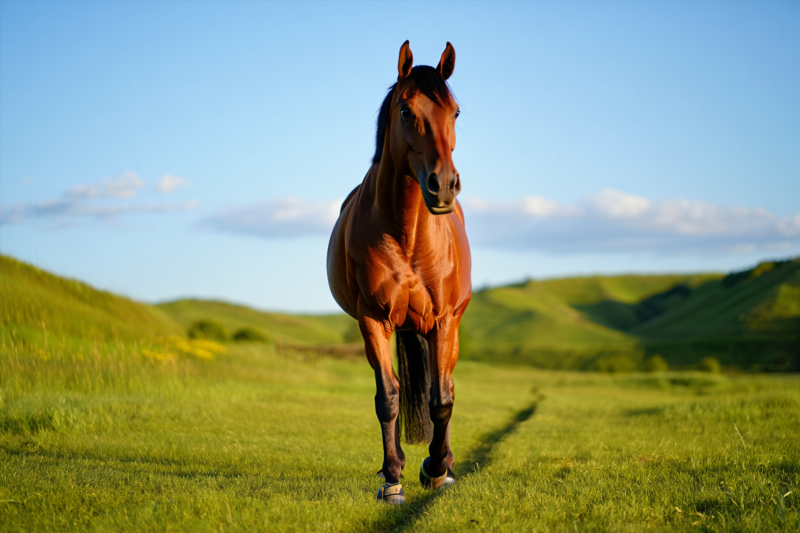
How Injuries Influence Horse Performance and Recovery Tips
Understanding the Impact of Injuries on Long-Term Horse Performance
In the world of equine sports and leisure riding, injuries are an inevitable challenge that can profoundly influence a horse’s future agility, strength, and overall health. Recognizing how injuries affect a horse’s long-term performance is essential for owners, trainers, and veterinarians committed to maintaining their horse’s peak condition.
The Consequences of Untreated or Poorly Managed Injuries
Injuries—ranging from minor cuts to complex ligament tears—can have lasting repercussions if not properly addressed:
- Reduced Mobility: Limping or stiffness can become chronic issues, impairing training and competitive performance.
- Weakening of Muscles and Tendons: Scar tissue formation may limit flexibility, making the horse prone to re-injury.
- Degenerative Conditions: Chronic inflammation can lead to conditions such as arthritis, affecting soundness over time.
- Altered Gait and Mechanics: Compensation for injury can cause uneven load distribution, leading to secondary injuries.
Key Areas Most Affected by Injuries
Some of the most vulnerable parts of a horse include:
| Body Part | Common Injuries | Long-Term Effects |
| Legs | Tendon tears, ligament strains | Chronic lameness, instability |
| Hocks | Osteoarthritis, inflammation | Reduced jumping ability, agility decline |
| Hooves | Abscesses, laminitis | Altered gait, discomfort |
Effective Recovery Methods to Restore Peak Performance
Achieving full recovery from injuries is a meticulous process that combines veterinary care, strategic rehabilitation, and careful management.
1. Immediate and Proper Veterinary Intervention
- Accurate Diagnosis: Imaging techniques like ultrasound or MRI to determine injury extent.
- Tailored Treatment Plans: Rest, medication, or surgical options as appropriate.
- Pain Management: Proper use of anti-inflammatory drugs and pain relief.
2. Rest and Controlled Movement
- Rest Periods: Essential for tissue healing; duration varies depending on injury severity.
- Gradual Return to Exercise: Slow reintroduction of activity to prevent re-injury.
3. Rehabilitation and Physiotherapy
- Physical Therapy: Customized exercises to regain strength and flexibility.
- Hydrotherapy: Swimming or underwater treadmill work to minimize impact.
- Massage and Spa Treatments: Promote circulation and aid in tissue repair.
4. Nutritional Support
- Optimal Diet: Rich in amino acids, vitamins, and minerals promoting tissue regeneration.
- Supplements: Joint support formulas containing glucosamine or chondroitin.
5. Preventative Measures for Future Injuries
- Proper Shoeing and Footing: Ensuring appropriate Hoof care.
- Balanced Training Regimens: Avoid overtraining and sudden intensity spikes.
- Regular Veterinary Check-ups: Early detection of potential issues.
Expert Solutions for Long-Term Health and Performance
Achieving long-term health after injury requires a proactive and holistic approach:
- Use of Advanced Diagnostics: Regular imaging and assessments for early detection.
- Customized Rehab Programs: Designed by equine physiotherapists and veterinarians.
- Innovative Treatments: Platelet-rich plasma (PRP), stem cell therapy, and other regenerative techniques.
- Monitoring and Data Recording: Tracking performance and recovery metrics for ongoing adjustments.
Frequently Asked Questions
How long does it typically take for a horse to recover from a tendon injury?
Recovery time varies based on injury severity but generally ranges from 4 to 12 months. Strict adherence to rehabilitation protocols is crucial for successful recovery.
Can a horse fully regain its original performance after injury?
Yes, with proper treatment and rehabilitation, many horses return to their previous levels of performance. However, some injuries may require adjustments in training or competition routines.
Are there ways to prevent injuries in horses?
Prevention involves proper conditioning, regular veterinary care, suitable footwear, and balanced training programs to minimize the risk of injuries.
Injuries are an inevitable aspect of a horse’s active life, but their impact on long-term performance can be mitigated through timely, expert intervention and comprehensive recovery strategies. By understanding how injuries influence agility and strength, and implementing tailored rehabilitation plans, owners can ensure their horses not only recover but thrive, maintaining peak performance and long-term health. Explore expert solutions today and give your horse the best chance at a healthy, active future.